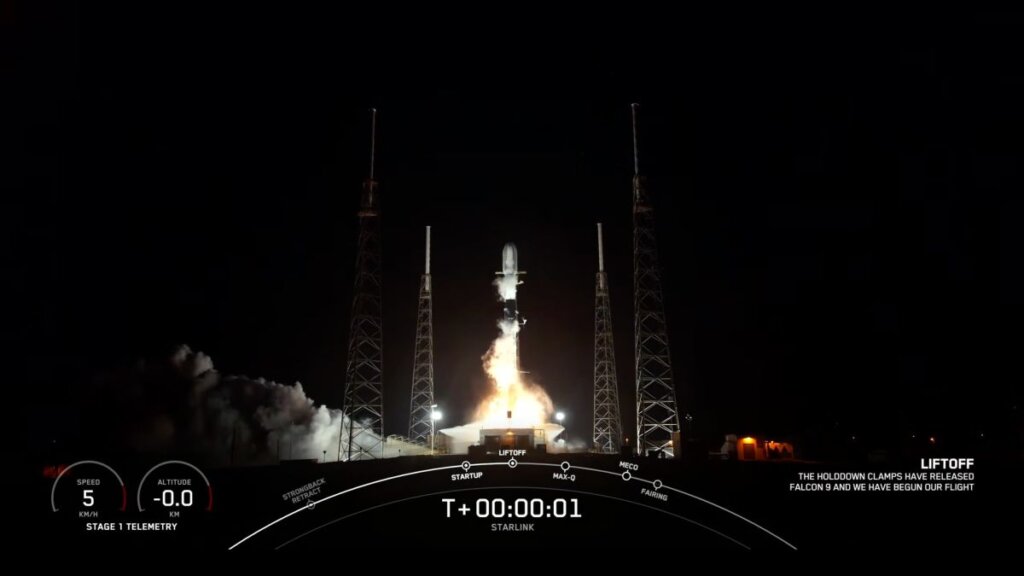SpaceX just set a new rocket-reuse record.
A Falcon 9 rocket lifted off from Cape Canaveral Space Force Station in Florida Sunday at 11:58 p.m. EDT (0358 GMT on July 10), sending 22 of SpaceX‘s Starlink satellites toward low-Earth orbit (LEO).
It was the unprecedented 16th launch for this Falcon 9’s first-stage booster, according to the company.
Related: SpaceX’s Starlink satellite megaconstellation launches in photos
The booster came back to Earth for a 16th landing as well, touching down on the deck of the SpaceX droneship Just Read the Instructions in the Atlantic Ocean about 8.5 minutes after liftoff.
The Falcon 9’s expendable upper stage, meanwhile, continued hauling the 22 Starlink satellites aloft. The batch is scheduled to be deployed in LEO 62 minutes after launch.
The 22 satellites are “V2 Minis,” a newer and more powerful version of SpaceX’s broadband craft. They’re actually bigger than the previous Starlink iteration, about 50 of which can fit on a Falcon 9. But they’re “mini” compared to the final V2 satellites, 1.25-ton (1.1 metric tons) spacecraft that will launch aboard SpaceX’s giant, next-gen Starship vehicle.
“V2 minis include key technologies — such as more powerful phased array antennas and the use of E-band for backhaul — which will allow Starlink to provide ~4x more capacity per satellite than earlier iterations,” SpaceX said via Twitter in February.
The Falcon 9 first stage that flew Sunday night last launched in December 2022. Among its 15 previous flights are Demo-2, SpaceX’s first-ever crewed mission, which sent two NASA astronauts to the International Space Station in 2020.
The booster is not a reuse outlier; another Falcon 9 first stage has 15 flights under its belt, and a few others have launched 14 times.
Starship will take reflight to another level, if all goes according to plan. The giant vehicle, the most powerful rocket ever built, is designed to be fully reusable. And both of its stages will be capable of flying multiple times in a single day, SpaceX founder and CEO Elon Musk has said.
Editor’s note: This story was updated at 1 a.m. ET on July 9 with the new launch time of 8:36 p.m. EDT. The original launch target was July 9 at 4:36 a.m. EDT. It was updated again at 9 p.m. ET on July 9 with the new launch time of 11:58 p.m. EDT. It was updated again at 12:25 a.m. ET on July 10 with news of successful launch and rocket landing.

